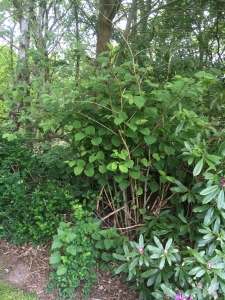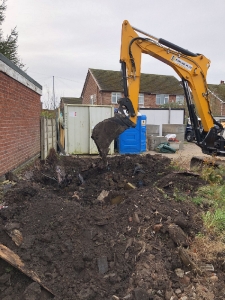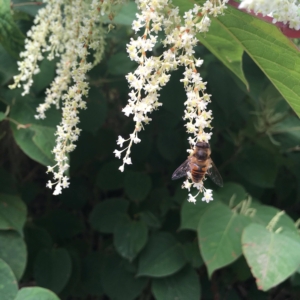Finding Japanese Knotweed on your land can be scary at times. However, your mind can be put at rest once there is a treatment plan in place. To find out what treatment types for Japanese knotweed is best for you, carry on reading below.

A herbicide treatment plan can consist of spraying the knotweed as well as injecting the stem. Consequently, it is the most common and cost-effective way of removing this invasive species. Also, the best time for spraying knotweed is as the plant is actively growing on a warm, sunny day.
We carry out Herbicide treatments 3-6 times during the first growing season. Also, we will implement a further two years of monitoring the affected land to ensure no regrowth of the weed.
The benefit of having an excavation is that it’s a much quicker method of removal compared to herbicide treatments. This method is typically used when you do not have time to treat the knotweed in another way. Therefore, excavations are most common on construction sites as the excavation allows building work to continue almost instantly after the removal.


A permanent burial involves the sifting of the contaminated soil, so we catch the rhizomes and removed. From this, we will deposit the soil back into the hole that we excavated. Essentially, removing the dumping costs of a removal. Afterwards, we will wrap the earth in a UV and animal-resistant root barrier membrane and buried at least 2m underground.
This treatment requires us to excavate a very large area. So, it is not always a practical method to undergo if you have found Japanese knotweed on a smaller site.
If you think you have found Japanese knotweed on your land then do not hesitate to get into contact with us today!
